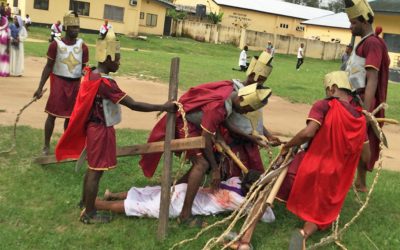The Medicine of Belief: Health from the Viking Age and Onwards
Photo by Steinar Engeland/Unsplash
By Terje Oestigaard
Before the existence of germ theory and the discovery of viruses, people in the past found different explanations to understand death and disease. In Scandinavia, from prehistory to the Viking Age, around 800-1000 AD, and beyond, when the body was under attack it was believed that malignant spirits, often those of ancestors, caused the sickness and suffering. If the ailments were familiar, it was because the deceased relatives had been family members, friends or neighbours. Illness was thought to be a spiritual attack.
It’s easy to see how sickness could be conceptualized this way: if a person goes from being healthy and strong one day, to suffering from extreme pains the next, it would make sense to blame the supernatural in the absence of insights about microbes. In addition, symptoms like fever come in waves, and every illness is highly individual in duration, experience and consequences, which can point to specific attacks from someone’s particular ancestors. Within this framework, it’s not just the brain and body that may come under attack, but also animals, harvests and the fertility of fields. So what could explain these spiritual attacks?
The concept of sickness-causing spiritual attacks can be found in many agricultural and pre-industrial religions, and has even co-existed in tandem with modern medicines in some cases. In Scandinavia, beliefs about the soul have endured well into the 20th century. Here, death and the dead took very direct and explicit roles in curing and healing the sick. The ancestors were considered active and alive, and there were innumerable observations from weather phenomena to actual encounters with the dead. While witches in Christianity were considered solely evil because of their pacts with the devil, ancestors in this Scandinavian cosmology were both good and bad at the same time. They were a tremendous resource of wealth and protection if their benevolent powers could be harvested, but if they were mistreated and offended, their malevolent forces could wreak havoc in society.
And if the dead were the causes of sickness, they were also the solution and medicine for these same troubles. The absence of sickness was a matter of effective protections from attacks, and therefore pleasing the malignant spirits and dead souls was a necessary precaution for maintaining health. This was done by providing for spirits, making sacrifices, offering food, beer and hospitality, and being generous by opening up the home and hearth.
We can also see how beliefs play a large role in the COVID-19 pandemic, as some people discuss a variety of conspiracy theories to explain the illness.
Today, children often complain that medicines taste bad. In the old days, the medicine was deliberately made to taste awful, and the logic was simple: the bad taste and smell would chase away the attacking spirit. Still, the strongest and most powerful medicine against death and dying was found in precisely what was believed to cause death and dying: the dead themselves.
While the idea of using the dead as a remedy may today seem distasteful or downright morbid, there is a supernatural logic to these beliefs. All of the dead, particularly those who suffered unnatural deaths or who died too early, were believed to possess extra life-force and powers, and this was an enormous and highly valuable resource in the constant battle against death and diseases. This is understood to be a kind of ‘medical cannibalism’.
In rural areas in Scandinavia during the 19th century, after the dead body was washed, the water used to wash the corpse was believed to contain unused life-forces, which people could drink or smear on injured body parts. Similarly, there are numerous stories of the life-giving qualities of the deceased’s blood, say, after executioners kill a convict. In fact, most bodily fluids, like breast milk, or the placenta and the umbilical cord, were believed to have efficient curative powers for specific sicknesses, or simply as protective measures against these illnesses. Naturally, these bodily substances could also be used for malignant purposes and flourished in black-magic recipes.
These concepts and practices were part of the Scandinavian mentalities in the 19th century, and the last remnants were documented as ethnological traditions in the early 20th century. Moving a century forward to today, we still find many similar perceptions in our hyper-modern and technological world, so this is not something merely belonging to the past.
For instance, we still see the poaching of wild animals, such as elephants and rhinos for their tusks as potency and fertility medicine, or snakes and other endangered animals. And while most people believe in science, hospitals and modern medicines, many still turn to alternative medicines and practices as a last option if a terminal disease proves difficult to cure. There are also mental illnesses that are difficult to treat, and can easily provoke the idea that the mind is under attack. We can also see how beliefs play a large role in the COVID-19 pandemic, as some people discuss a variety of conspiracy theories to explain the illness.
Because death and diseases are so physically and painfully embodied in muscles and memories, even with the knowledge of invisible viruses and bacteria, it can be difficult to understand why and how the body is attacked. For everyone without access to the tools to observe microbes and viruses at work, there is a feeling of an invisible force at work, which can create fear and panic. This, in turn, may tempt people to broaden the repertoire of medicines and include remedies that are less scientifically sound, potentially causing more harm than good. Modern medicine has come a long way since the Viking Age, but in many ways we are still susceptible to our beliefs.
Terje Oestigaard is an archaeologist, researcher and Docent at the Department of Archaeology and Ancient History, Uppsala University, Sweden. Since 2006, he has worked with the Nile basin countries and conducted fieldworks in Egypt, Ethiopia, Tanzania and Uganda. Previous to his research in Africa, he conducted contemporary and archaeological fieldworks in Bangladesh, Greece, Jordan, India, Nepal, Palestine as well as in Scandinavia. He is also the author of The Religious Nile. Water, Ritual and Society since Ancient Egypt (I.B. Tauris, London, 2018).



